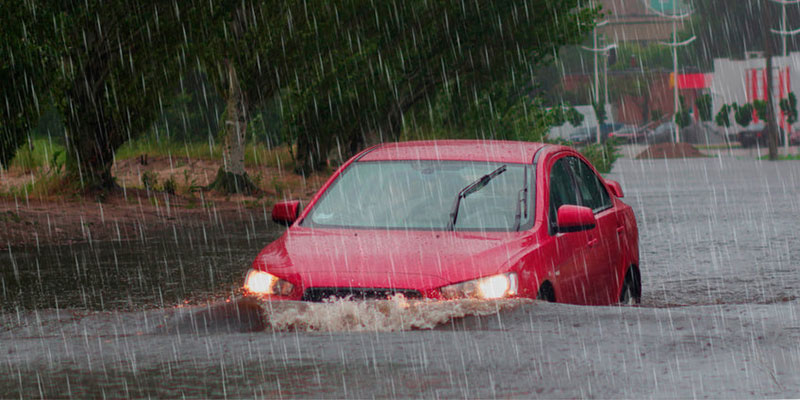Urban infrastructure often prevents absorption of stormwater, which can lead to street flooding.
Unless water can replenish underground aquifers, the danger remains
It may seem counterintuitive, but heavy rainfall — even extreme flooding — may not end a drought or water shortage. According to the United States Geological Survey, flooding and drought are related much as medicine and illness are. A single dose of medicine may temporarily relieve symptoms, but a cure often requires a long course of treatment. Similarly, a single rain event, no matter how extreme, will likely not end a drought even though it might provide some temporary relief.
Drought conditions are determined not just by precipitation volumes but by how much water remains available to support communities and the environment. At the end of 2021, for instance, snowpack in drought-plagued California had accumulated to 150% of its normal level. Donner Pass experienced the snowiest December ever recorded with 210 inches of snow, beating the 1970 record by two feet.
With 90% of California remaining in extreme drought, the land was still parched and the groundwater running short. Residents were cautioned that high snowpack levels would not be enough. It generally takes a whole season of so-called atmospheric rivers, or long stretches of rainclouds that release precipitation as they move over land, to break a drought.
Because snow melts earlier and more quickly in a warming climate, high snow levels can lead to flooding. California’s flood risk also comes from development decisions that harm the ability of the state’s flood plains to absorb stormwater into aquifers.
Laura Condon, a hydrologist at the University of Arizona, explained:
Rain is great but it takes a lot to make it out of a drought. The challenge is that when we have intense large rainfall events it’s generally raining faster than it can infiltrate into the subsurface so most of it runs off. The best conditions for groundwater recharge is lower intensity rainfall that happens over longer time periods.
As explained in the Los Angeles Times: “Even if it’s currently a very wet state, it’s also, simultaneously, a very dry state. Drought and flooding go together.”
California has initiated a number of measures to use stormwater to recharge aquifers, such as groundwater banking and large, underground storage projects. In one example, some irrigation districts are stepping up a longheld practice of using diversion structures to direct stormwater onto special fields that allow the water to rapidly percolate down into aquifers.
Aaron Fukuda, general manager of the Tulare Irrigation District, said:
[I]nstead of sticking with the original recharge plans, we are aggressively recharging. If someone can point to a hole one foot by one foot by one foot, I’ll go and put water in it.
Groundwater Shortage in Swampy Louisiana
More than 1,500 miles away in Louisiana, the bayous and extensive swamps mask a critical groundwater shortage. In the state, which frequently experiences flooding from cresting levees, hurricanes, and extreme rainfall, groundwater levels are dropping faster than nearly anywhere in the U.S. Decades of unregulated overpumping by industry and agriculture have brought the seemingly wet state to the edge of a groundwater crisis.
As the state overpumps, the water table drops and nearby saltwater from the Gulf of Mexico is seeping in to fill the void, making aquifers quickly unusable without desalination. Researcher Christine Kirchhoff of the University of Connecticut warned:
You might have a well that is functioning just fine now, but once salt contaminates fresh water, it’s done. That’s it. You no longer have that well.
Reverse osmosis water filtration, however, can make brackish or saline aquifers a source of fresh water. In recent years, reverse osmosis desalination technology has become more efficient and viable, especially for brackish water, which is easier and less expensive to desalinate than seawater.
Fluence’s NIROBOX™ modular desalination plants are containerized and resistant to hurricane winds up to 150 mph for hurricane-prone regions like Southern Louisiana. The compact units support a decentralized approach, meaning that plants can be in places where they’re needed, with minimal piping.
Like a boom-bust monetary cycle, a flood-drought cycle can be harmful to human communities. For more climate resilience, Fluence has a catalog of solutions to supply effluent for aquifer recharge and desalinated water anywhere in the world, and our Water Management Services can deliver it with no upfront investment. Contact Fluence. Our experts are waiting to help you achieve your water goals.

